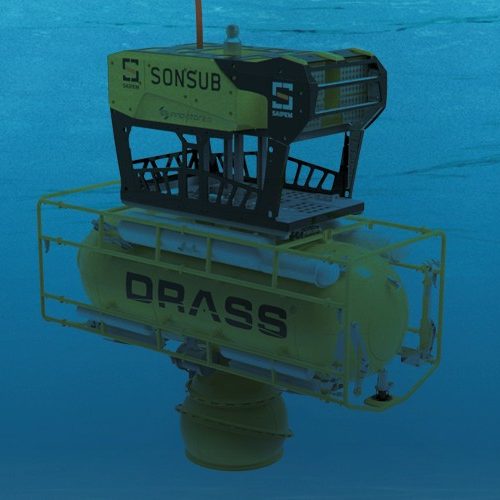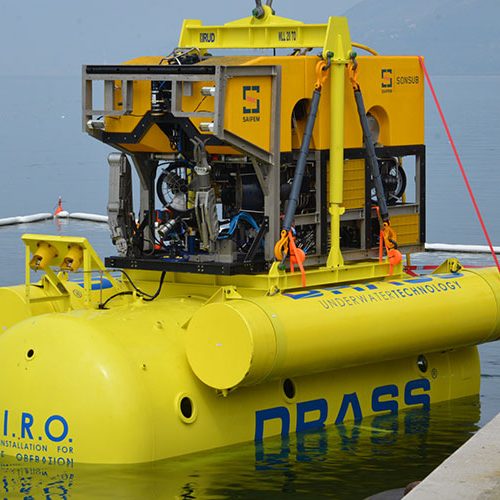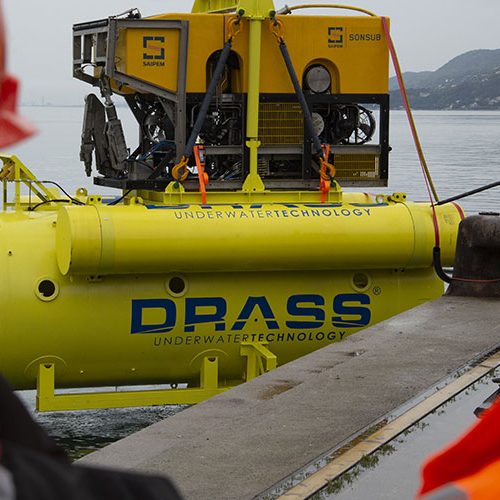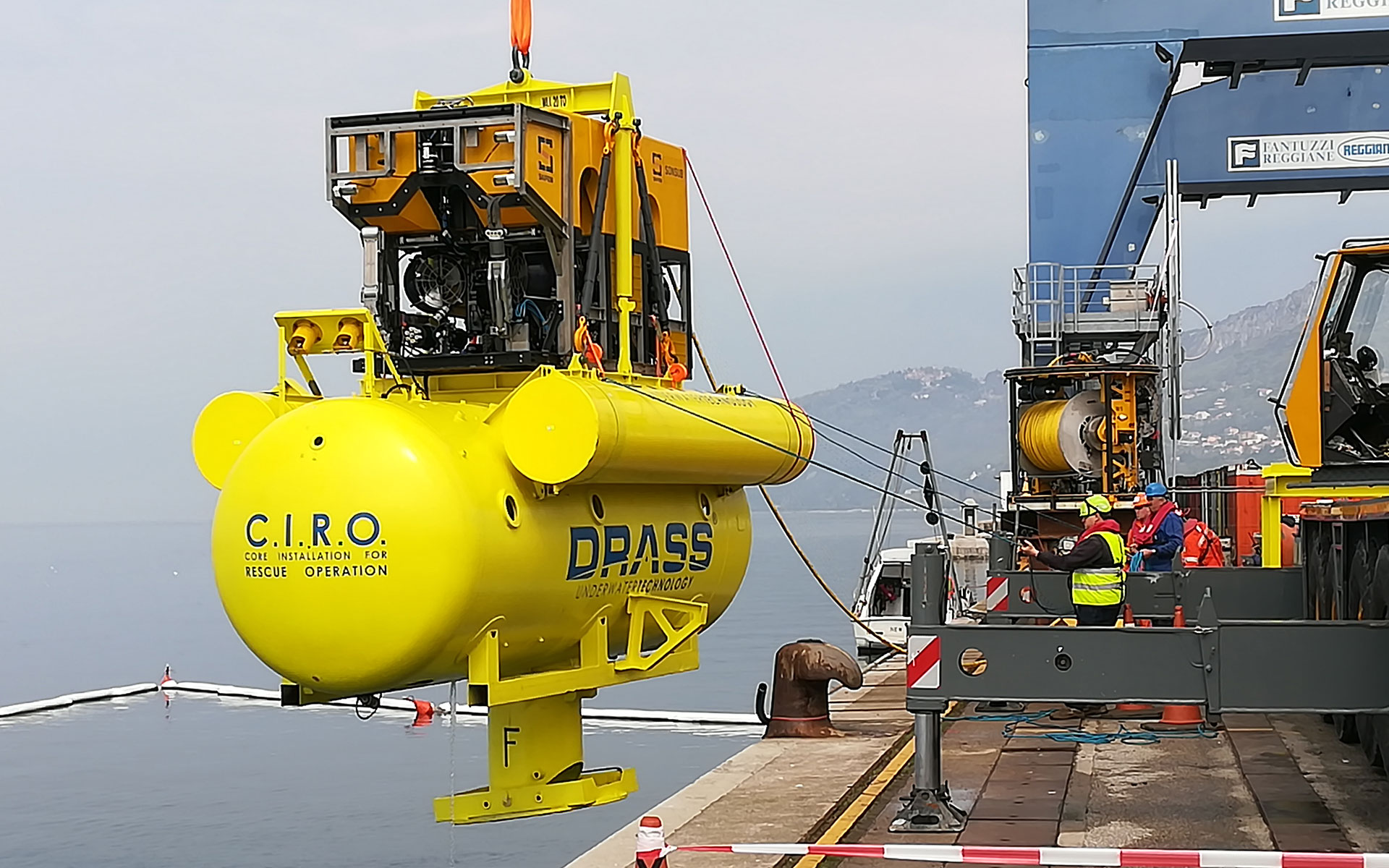DRASS SRV is a modern, effective and reliable rescue vehicle, remotely operated and launched from the moon pool. DRASS SRV is capable of the most extended endurance in intense weather conditions – operating in very rough seas and connecting to the DISSUB even during extreme angle inclination. (SRV) SUBMARINE RESCUE VEHICLE
The SRV moon pool launch offers the highest reliability and safety standards even in extreme sea conditions thanks to the rail guides and protection of a passive cursor. The cursor extends outside the ship keel, protecting the SRV from accidental bumping against the hull. The main wire pulls the SRV gently into the cursor which is conically shaped to connect with the entrance of the SRV frame.


DRASS new SRV design is a reliable, modular, expandable and patented solution, based on the combination of a first-class industrial Working Remotely Operated Vehicle (WROV) and a technology proven Capsule for Intervention and Rescue Operation (CIRO); the WROV provides power and propulsion to CIRO and is docked onto it providing a simple but extremely reliable and cost-effective combination if compared with the existing RORV disassembles the ROV and reassembles it around the CIRO.
The CIRO is equipped with a variable inclination skirt to mate with the DISSUB (if pitched and/or rolled) preventing therefore loss of time in the setting of the skirt on surface and allowing adjustment once landed on the DISSUB ensuring the best mating position of the vehicle in order to reduce the interference between itself and the DISSUB. DRASS SRV presents the following advantages compared to the conventional solutions:
